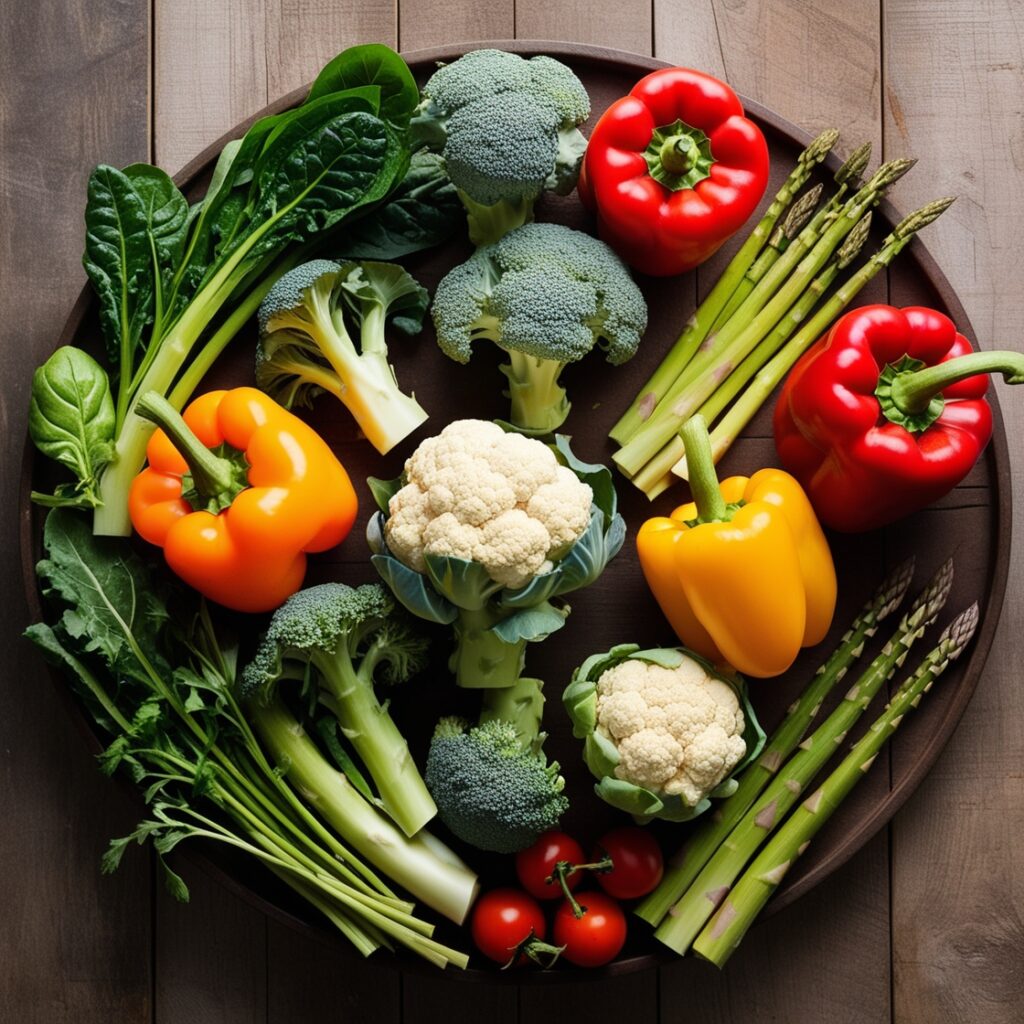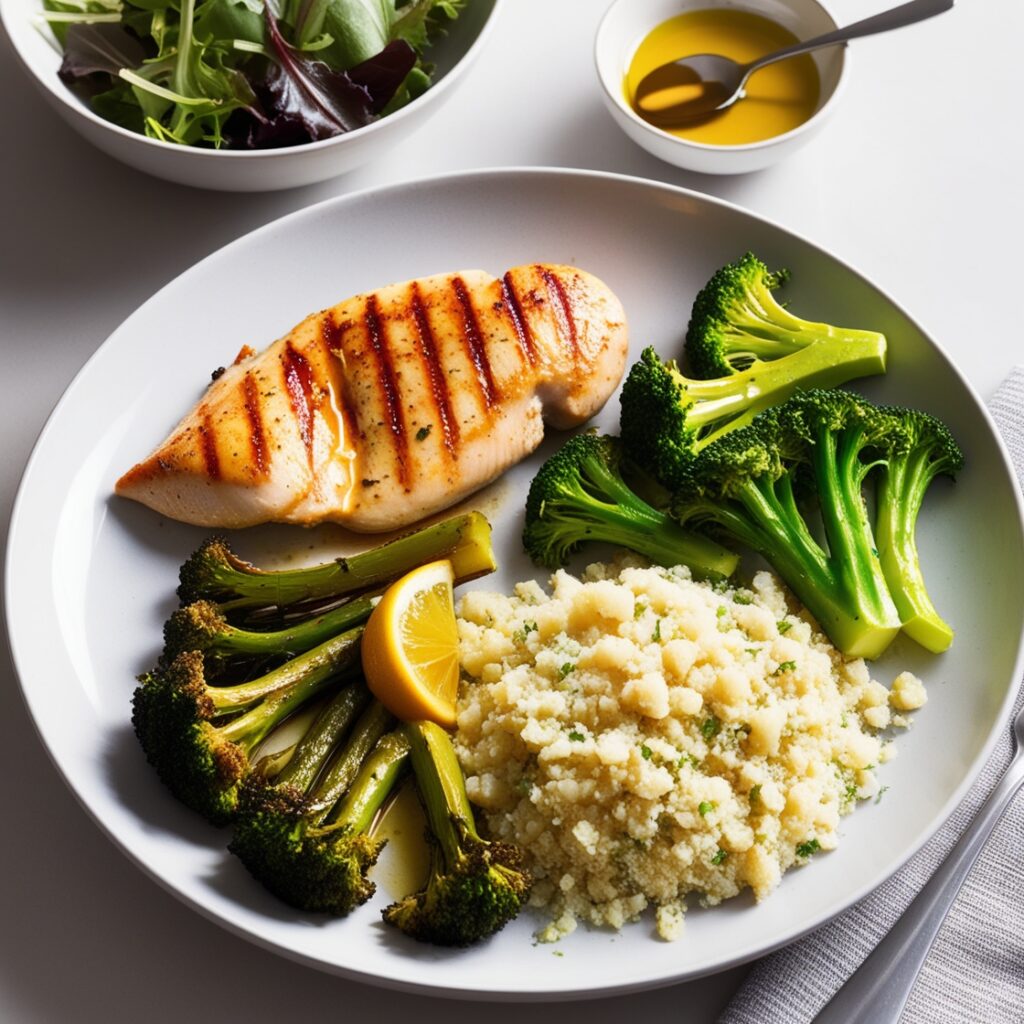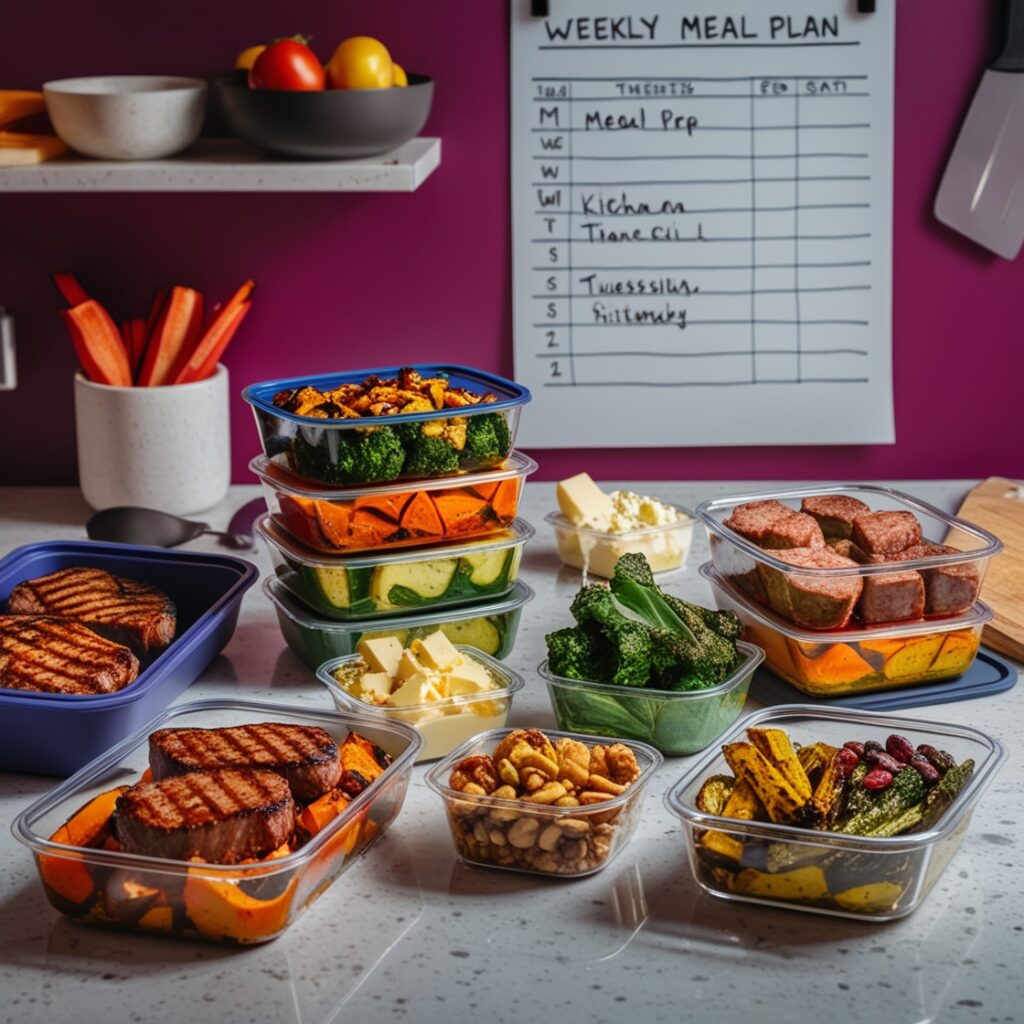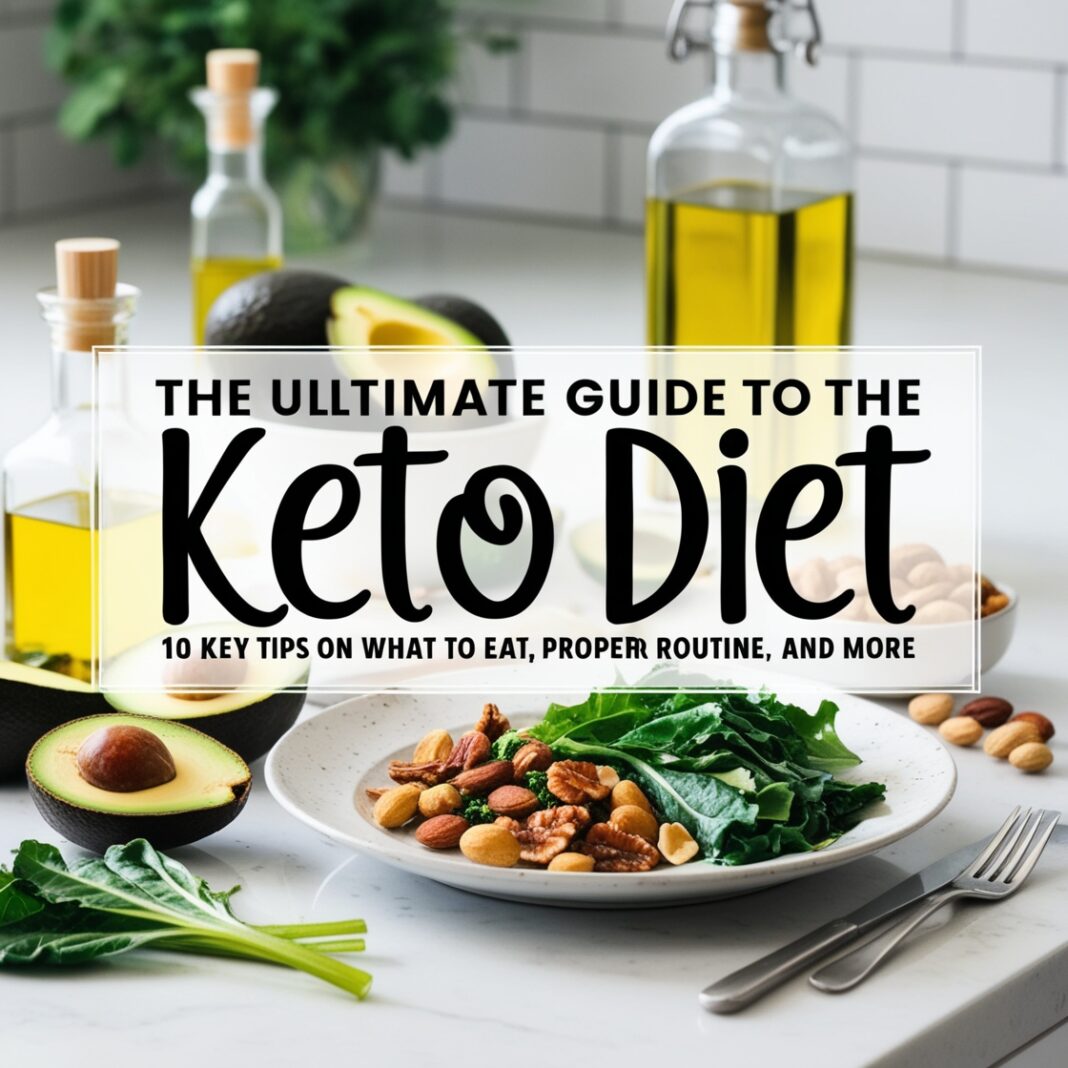Introduction
The ketogenic diet, often referred to as the keto diet, has surged in popularity for its potential health benefits and weight loss effects. This low-carb, high-fat diet changes the way your body fuels itself, promoting a metabolic state called ketosis. But what exactly should you eat on a keto diet, and what is the proper routine to follow? In this comprehensive guide, we’ll explore everything you need to know to get started and thrive on the keto diet.
What is the Keto Diet?
The ketogenic diet is a high-fat, moderate-protein, and very low-carbohydrate eating plan. The primary goal of the diet is to shift the body’s metabolism away from carbohydrates and toward fats and ketones, which are compounds produced from fatty acids. By drastically reducing carbohydrate intake and replacing it with fat, your body enters a state known as ketosis.
The keto diet is not just a weight-loss fad; it has roots in medical science dating back to the 1920s, originally developed to treat epilepsy in children. Today, it is also recognized for its potential benefits in managing type 2 diabetes, neurological conditions, and even certain cancers.
The Science Behind Ketosis
Ketosis is a natural metabolic state where the body produces ketones from fat, which serve as an alternative energy source to glucose. Typically, the body converts carbohydrates into glucose for energy. However, when carbohydrate intake is significantly reduced, the liver converts fatty acids into ketones, which are then used for energy.
This metabolic shift offers several potential benefits, including:
- Weight Loss: Ketosis can help burn fat more effectively.
- Improved Mental Clarity: Ketones are a potent fuel source for the brain.
- Enhanced Energy Levels: Steady energy levels without the spikes and crashes associated with carbohydrate consumption.
- Stabilized Blood Sugar: Lowered carbohydrate intake can help manage blood sugar levels.
Foods to Eat on a Keto Diet
Healthy Fats
Healthy fats are the cornerstone of the keto diet. They provide the majority of your daily caloric intake and help maintain ketosis.

- Avocados and Avocado Oil: Rich in monounsaturated fats and low in carbs. Avocados are also high in fiber, which can help with digestive health.
- Coconut Oil and MCT Oil: Contain medium-chain triglycerides that are quickly converted into ketones. MCT oil is particularly effective in boosting ketone levels.
- Olive Oil: High in monounsaturated fats and antioxidants. It’s versatile and can be used in salads, cooking, and drizzling over dishes.
- Butter and Ghee: Source of healthy fats and butyric acid. Ghee is clarified butter and can be more suitable for those with lactose intolerance.
- Nuts and Seeds: Almonds, walnuts, flaxseeds, and chia seeds are excellent sources. They provide healthy fats, protein, and fiber.
Protein Sources
While the keto diet is not high in protein, it is essential to include moderate amounts from high-quality sources.
- Meat: Beef, pork, lamb, and game meats. Grass-fed and organic options are preferable for higher omega-3 content.
- Poultry: Chicken, turkey, and duck. Including the skin can add more fat to meet your macronutrient goals.
- Fish and Seafood: Salmon, mackerel, sardines, and shellfish. Fatty fish are particularly beneficial for their omega-3 fatty acids.
- Eggs: A versatile and nutrient-dense protein source. Eggs are also rich in vitamins and minerals, including choline, which is important for brain health.
Low-Carb Vegetables
Vegetables are important for their vitamins, minerals, and fiber content, but on keto, you need to choose those that are low in carbs.
- Leafy Greens: Spinach, kale, arugula, and lettuce. These are excellent for salads and side dishes.
- Cruciferous Vegetables: Broccoli, cauliflower, and Brussels sprouts. These vegetables are also high in fiber and can be used in various keto recipes.
- Others: Zucchini, bell peppers, asparagus, and cucumbers. Zucchini can be spiraled into noodles as a pasta substitute, and bell peppers add a sweet crunch to dishes.

Dairy Products
Full-fat dairy products are suitable for the keto diet, provided they are consumed in moderation.
- Cheese: Cheddar, mozzarella, brie, and blue cheese. Cheese can be a great snack or addition to meals for extra fat and flavor.
- Cream: Heavy whipping cream and sour cream. These can be used in coffee, desserts, and savory dishes.
- Yogurt: Full-fat, unsweetened Greek yogurt (in moderation). Greek yogurt can be a good source of protein and fat, but be cautious of the carbohydrate content.
Nuts and Seeds
These are excellent sources of healthy fats, protein, and fiber, but be mindful of their carb content.
- Almonds and Walnuts: High in healthy fats and relatively low in carbs. These can be eaten as snacks or added to meals for crunch.
- Chia Seeds and Flaxseeds: Great for adding fiber to your diet. They can be used in smoothies, baking, and as a thickener in recipes.
- Pecans and Macadamia Nuts: Very low in carbs and high in fat. These are some of the best nuts for a keto diet.
Beverages
Staying hydrated is crucial on the keto diet. Here are some keto-friendly options:
- Water: The best choice for hydration. Adding a pinch of salt or an electrolyte supplement can help maintain electrolyte balance.
- Herbal Tea: Unsweetened varieties like green tea and peppermint tea. Herbal teas can be soothing and provide additional health benefits.
- Coffee: Black or with a splash of heavy cream. Bulletproof coffee, made with MCT oil and butter, is a popular keto-friendly option.
- Bone Broth: Provides electrolytes and supports hydration. Bone broth is also rich in collagen and other beneficial compounds.
Foods to Avoid on a Keto Diet
To maintain ketosis, you must avoid foods high in carbohydrates. Here are some to steer clear of:
- Sugary Foods: Candy, soda, and baked goods. These can quickly spike your blood sugar and kick you out of ketosis.
- Grains and Starches: Bread, pasta, rice, and cereal. Even whole grains and starchy vegetables like potatoes are high in carbs.
- Fruit: Most fruits are high in sugar; opt for berries in moderation. Berries like strawberries, blueberries, and raspberries can be consumed in small amounts.
- Legumes: Beans, lentils, and chickpeas. These are high in carbs and can disrupt ketosis.
- Processed Foods: Snack foods, chips, and fast food. These often contain hidden sugars and unhealthy fats.
- Trans Fats: Margarine and some processed oils. Trans fats are unhealthy and should be avoided regardless of diet.
A Day in the Life: Sample Keto Diet Routine
Morning
Breakfast:
- Keto-friendly smoothie with spinach, avocado, unsweetened almond milk, and a scoop of protein powder.
- Coffee with MCT oil and heavy cream.
Mid-Morning Snack:
- A handful of macadamia nuts or an ounce of cheese.
Afternoon
Lunch:
- Grilled chicken salad with leafy greens, cucumber, olives, avocado, and a dressing of olive oil and vinegar.
Afternoon Snack:
- Celery sticks with almond butter or a few olives.
Evening
Dinner:
- Baked salmon with a side of sautéed broccoli and cauliflower rice.
Dessert:
- A small serving of full-fat Greek yogurt topped with a few raspberries.
Before Bed:
- Herbal tea or a cup of bone broth.

Meal Planning and Prep Tips
- Plan Your Meals Ahead: Create a weekly meal plan to ensure you stay on track. Planning helps you avoid last-minute food choices that might not be keto-friendly.
- Batch Cook: Prepare large quantities of keto-friendly meals and freeze portions for later. This can save time and ensure you always have a keto meal ready.
- Stock Up on Essentials: Keep keto staples like olive oil, coconut oil, nuts, and low-carb vegetables on hand. Having these items readily available makes meal prep easier.
- Prep Snacks: Have keto-friendly snacks ready to grab when hunger strikes. This can prevent you from reaching for high-carb options.
Common Mistakes to Avoid
- Not Eating Enough Fat: Remember, fat is your primary energy source on keto. Many people new to the diet fail to consume enough fat, which can lead to low energy and cravings.
- Eating Too Many Carbs: Hidden carbs can sneak into sauces, dressings, and processed foods. Always read labels and be mindful of carb content.
- Not Staying Hydrated: Dehydration can lead to the “keto flu” and other discomforts. Drink plenty of water and consider adding electrolytes.
- Ignoring Electrolytes: Sodium, potassium, and magnesium are crucial for preventing cramps and maintaining energy levels. Adding salt to your food and taking electrolyte supplements can help.
Keto Diet and Exercise
Types of Exercise
- Aerobic Exercise: Walking, jogging, and cycling can be part of a keto-friendly workout routine. These activities help improve cardiovascular health.
- Strength Training: Lifting weights helps preserve muscle mass while losing fat. Muscle mass is important for metabolism and overall health.
- Flexibility and Balance: Yoga and Pilates can improve overall fitness and well-being. These exercises also help reduce stress and improve flexibility.
Timing Your Workouts
- Morning Workouts: Can be fueled by a small, high-fat snack. Exercising in the morning can boost your energy levels for the day.
- Post-Workout Nutrition: Include protein and healthy fats to aid recovery. A post-workout shake with protein powder and coconut milk can be a good option.
Potential Side Effects and How to Manage Them
Keto Flu
Symptoms: Headache, fatigue, dizziness, and nausea.
Management: Stay hydrated, consume electrolytes, and get enough rest. The keto flu is temporary and often resolves within a week.
Digestive Issues
Symptoms: Constipation or diarrhea.
Management: Increase fiber intake through low-carb vegetables and stay hydrated. Probiotics and digestive enzymes can also help.
Nutrient Deficiencies
Symptoms: Fatigue, muscle cramps, and weakness.
Management: Consider a multivitamin and ensure a varied diet. Focus on consuming a wide range of nutrient-dense foods.
Long-Term Sustainability and Health Considerations
- Variety: Keep your diet interesting by trying new recipes and foods. This helps prevent boredom and ensures you get a range of nutrients.
- Flexibility: Allow for occasional carb re-feeds if it helps maintain long-term adherence. Some people benefit from cyclical keto, which includes higher-carb days.
- Monitor Health: Regularly check blood lipid levels, blood sugar, and other health markers. Working with a healthcare professional can help you stay on track.
Keto Recipes to Try
Keto Avocado Egg Salad
Ingredients:
- 2 ripe avocados, diced
- 4 hard-boiled eggs, chopped
- 2 tablespoons mayonnaise
- 1 teaspoon Dijon mustard
- Salt and pepper to taste
- Fresh chives, chopped
Instructions:
- In a bowl, combine the diced avocados and chopped eggs.
- Add the mayonnaise, Dijon mustard, salt, and pepper.
- Mix until well combined.
- Garnish with chopped chives.
- Serve on a bed of lettuce or enjoy on its own.
Keto Garlic Butter Steak Bites
Ingredients:
- 1 pound sirloin steak, cut into bite-sized pieces
- 3 tablespoons butter
- 4 cloves garlic, minced
- 1 tablespoon fresh parsley, chopped
- Salt and pepper to taste
Instructions:
- Season the steak bites with salt and pepper.
- In a large skillet, melt the butter over medium-high heat.
- Add the steak bites and cook until browned, about 2-3 minutes per side.
- Add the minced garlic and cook for an additional minute.
- Remove from heat and sprinkle with fresh parsley.
- Serve with a side of sautéed broccoli or cauliflower rice.

Success Stories
Jane’s Keto Transformation
Jane, a 45-year-old mother of two, struggled with weight gain and low energy levels for years. After trying various diets without success, she decided to give the keto diet a try. Within the first month, Jane lost 10 pounds and noticed a significant boost in her energy levels. Over the next six months, she lost a total of 50 pounds and reported improved mental clarity and reduced cravings. Jane credits her success to meticulous meal planning, staying hydrated, and finding keto-friendly recipes that she enjoyed.
Mark’s Journey to Better Health
Mark, a 35-year-old software engineer, was diagnosed with type 2 diabetes. Concerned about his health, he researched dietary changes that could help manage his condition. Mark decided to adopt the keto diet and saw remarkable results. His blood sugar levels stabilized, and he was able to reduce his medication under his doctor’s supervision. Mark also experienced weight loss and increased energy, which motivated him to incorporate regular exercise into his routine. Today, Mark is healthier and more active than ever.
Conclusion
The keto diet can be an effective way to improve health, boost energy levels, and achieve weight loss goals. By understanding what to eat, following a proper routine, and avoiding common pitfalls, you can make the keto diet a sustainable and enjoyable lifestyle. Remember to listen to your body, stay hydrated, and consult with a healthcare professional before making significant dietary changes. Happy keto journey!
